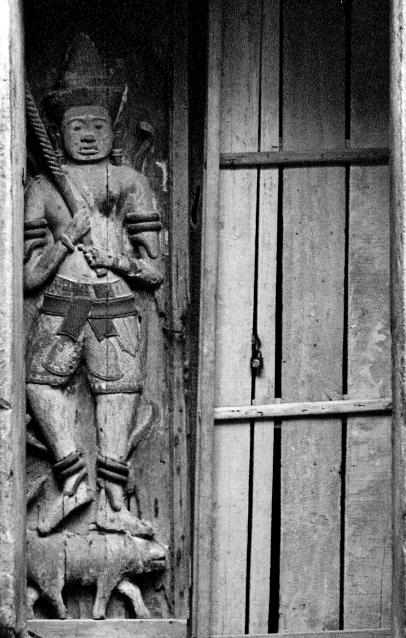Sorry, I’m all out of art puns. Just enjoy the pictures.

A young man puts the finishing touches on tradtional Myanma parasols, still produced by hand in workshops in Pathein.

The finished product, which makes a good souvenir, gets sold all over Burma, and exported to the US and EU.

Over 500 years of erosion and neglect has taken a toll on the temples of Mrauk U (Rakhine State, Burma), capital of Arakan for 350 years.

The Arakan kingdom was influenced by Hinduism and Buddhism for 100s of years before the arrival of Islam in 800s.

Arakan navies controlled the coasts from Bengal to Mawlamyine. and Mrauk U boasted mosques, temples, libraries, monastries and pagodas.

A cyclist blurs past the worker, farmer and scientist striving tirelessly for the Socialist Republic of Vietnam.

Quorn may be the biggest town in Australia's Flinders Ranges, but the sounds and light show on the town silos is about as big as it gets.

Apsara, sometime called devata or celestial dancers adorn most Khmer temples built by the ancient Cambodian kings.

The traditional Khmer dancers still perform these ancient dances, which were adopted by their neighbours in Siam.

In Phnom Penh a dancer performs a peacock dance. The bird is important in Buddhist mythology throughout the region.

Elephants are also held in high regard through the buddhist parts of the region. Here, the Terrace Of The Elephants, which was part of Cambodia's Royal Palace in the 12th century.

From the petite to the gigantic, 37 towers on Siem Reap's Bayon temple are carbed with four faces of Lokeshvara, a Buddhist deity.

Another delicate temple lintel from the Angkor era. I can't rule out that this isn't in Cambodia, but at Thailand's Phanom Rung. It was a long time ago.

Kosovo has a number of small but remarkable Ottoman mosques, like Hadum Mosque in Gjakova. Artwork which is almost never seen outside the Balkans depicts scenes of Mecca or landscapes.

Goddess On The Throne, at Kosovo National Museum, Pristina. This small figure is probably around 7000 years old.

The city was founded by Phillip of Macedon about 400BC, and was abandoned in the 6th century after an earthquake.

Like no other you will see, Tetovo, Macedonia's Šarena Džamija (lit: "decorated") or Painted Mosque.

Wat Ratchabophit in Bangkok is noted mainly for its round central hall, but the tilework colours to me showed a central Asian influence.

Phuket Town is home to many heritage buildings now serving as hotels and restaurants, all lovingly tarted up.






















